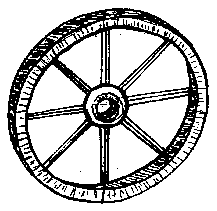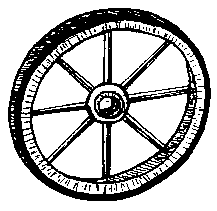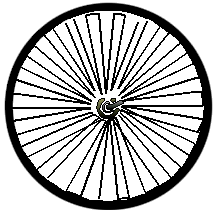Wheels
This task is about how wheels work.
These pictures show four stages in the development of the wheel over time.

Wooden-spoked wheel
|

Wooden disc wheel
|

Wooden wheel with iron rim
|

Metal-spoked wheel
|

